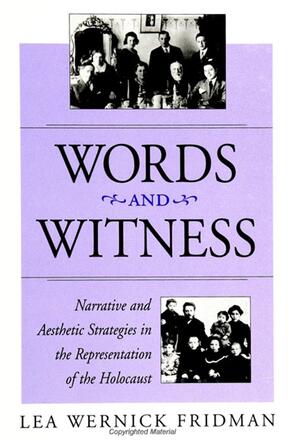
Words and Witness
Narrative and Aesthetic Strategies in the Representation of the Holocaust
Alternative formats available from:
Connects Holocaust literature and film to other works of "historical horror" in order to examine the limits that trauma imposes upon literary and artistic expression.
Description
Narratives of large-scale historical horror and trauma cross a terrible boundary in representation. What forms are adequate to such experience? What are the forms that such narratives actually take? Fridman is fascinated by the boundary that separates the representable from the unrepresentable and by the sense that literary works on either side of this boundary are governed by a different dynamic and set of rules from one another. Close readings of works by Aharon Appelfeld, Tadeusz Borowski, Paul Celan, Charlotte Delbo, Jerzy Kosinski, Claude Lanzmann, Dan Pagis, Piotr Rawicz, André Schwarz-Bart, and Elie Wiesel explore the inventive means by which these Holocaust writers wrestle with experiences that, in a very real sense, cannot be put into words. A new reading of Joseph Conrad's Heart of Darkness sets the stage for comparative and far-reaching literary insights into the notion and conception of traumatic narrative.
Lea Wernick Fridman is Assistant Professor of English at Kingsborough Community College.
Reviews
"This is a gripping and compelling piece of work. There's considerable wisdom in this book distilled from years of thinking about the subject in a sustained and personal way. I think this is arguably the best book on Holocaust literature that has ever been written. It is accessible, direct, honest, profound." — Herman Rapaport, author of Is There Truth in Art?
"This is an engaging, reflective, and thoughtful work. The author has insightfully set the stage for further discussion of the issue of horror and art, a topic that unfortunately is very much with us." — Alan L. Berger, author of Children of Job: American Second-Generation Witnesses to the Holocaust